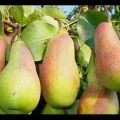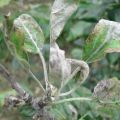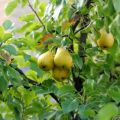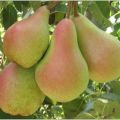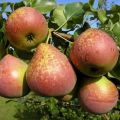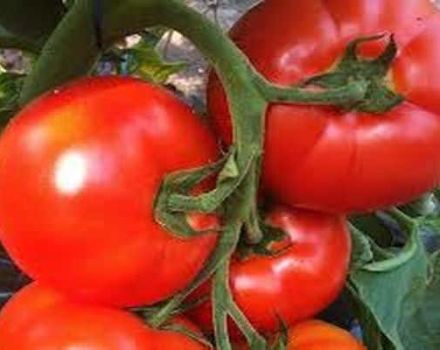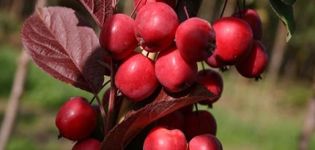Description and characteristics of pear varieties Russian beauty, planting, cultivation and care
The Russian beauty pear is the easiest to grow in the central part of Russia. The description indicates that the variety is unpretentious and rarely sick. There are many other positive characteristics as well. Gardeners should be more careful when choosing a seedling and preparing a site for planting. Care involves regular watering, fertilizing, pruning and protection from winter frosts.
Description and characteristics of pears Russian beauty
The pear variety Russian Beauty was bred by breeders specifically for the climate of central Russia. The famous geneticist S. Chernenko took part in the creation of the variety, therefore the variety is also called Krasavitsa Chernenko.
The plant belongs to the early autumn varieties. The tree begins to bloom in the 20th of May, you can start picking ripe fruits in the first decade of September.
The tree does not tolerate frost and drought well, so there will be difficulties when growing in the southern and northern regions of the country.
After planting a young tree, the first fruits can be collected in the 6th year. The number of crops grows gradually and reaches its maximum only after three years.
Wood
The tree is tall, reaching 6 meters. The crown is in the form of a cone, not too thick. The trunk and branches are light brown, growing evenly. The branches are directed upwards. The leaves are large and dark green in color. Their shape is oblong, turning into a pointed tip. At the edges, the leaves are slightly serrated.

Fruit
From one tree Russian beauty summer residents can collect up to 62 kg of ripe fruits. The weight of each pear ranges from 200 g to 350 g. Other characteristics of the fruit include:
- the skin is dense, but tender, greenish-yellow, red on the sides;
- the pulp contains a lot of juice and smells delicious;
- ripening of fruits is not simultaneous;
- the shape of the fruit is elongated.
The harvested pear harvest is consumed fresh, and fruits are also used to make jam, juices, compotes, and preserves.

Advantages and disadvantages of the variety
The positive qualities of the Russian beauty variety are:
- large fruits;
- the formation of a large harvest;
- high immunity to common diseases;
- good keeping quality and the ability to transport fruits over long distances;
- self-fertility (no additional pollination is required).
The cons of the variety are also indicated in the description:
- poor tolerance to low temperatures (below -24 degrees);
- the pear is not drought tolerant;
- late borders of fruit ripening;
- a tall tree makes it difficult to care for.
After planting, you will have to wait a long time for the first harvest. The maximum number of fruits begins to ripen after 12 years.

How to plant a pear?
The normal development of the Russian beauty pear is largely determined by the correct planting procedure.
Sapling selection
For planting, it is best to choose seedlings that are one or two years old, as they root best. The following characteristics indicate the quality and health of the seedling:
- trunk (its thickness must be at least 1 cm) and flexible branches;
- the height of the seedling is not more than one meter;
- the bark is smooth, light brown, without scratches or cracks;
- root branches without dry and rotten roots;
- the roots must have at least three branches.
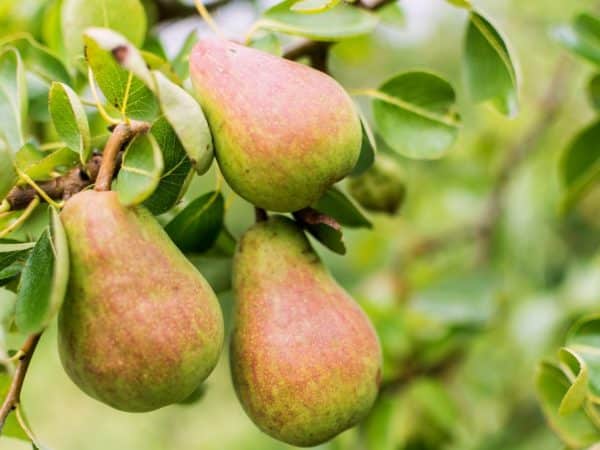
Before planting, the strongest and largest roots of the tree should be shortened by about 11 cm. Cut off the top of the tree. Then the roots of the seedling are placed in a bucket of warm water.
Landing dates
You can plant a crop in mid-autumn or spring. In the fall, planting begins before the onset of frost - in early October. In spring, April is considered the best time. The soil should warm up well, and the night temperature should not be lower than +4 degrees.

Place and soil for pear
In order for the pear to develop successfully, it is necessary to choose the right land plot:
- For planting pears, choose a warm and well-lit area, protected from through winds.
- The chosen place should not be shadowed by neighboring buildings and trees. The distance from the pear to other fruit trees must be at least three meters.
- Groundwater should not flow too close to the surface of the earth. The minimum depth of their flow is 2 meters.
- The soil should be fertile, loose, well aerated and neutral in acidity.
Pear variety Russian Beauty belongs to self-fertile crops, but pollinators are needed to increase yields. For this purpose, other pears are planted nearby.
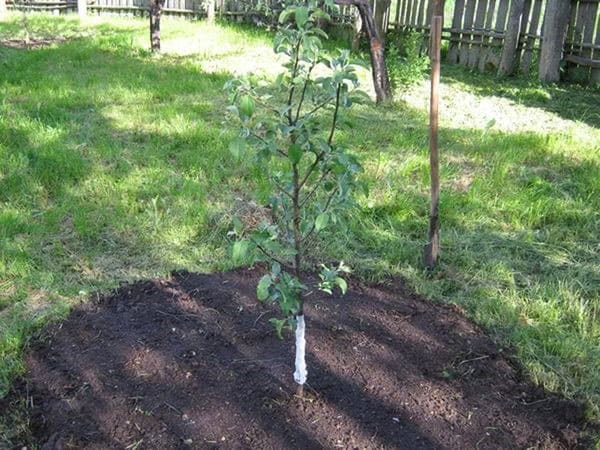
Preparation of the pit
A planting pit for a young tree is prepared in advance:
- Dig a hole 95 cm deep and 76 cm in diameter.
- The top layer of the earth is mixed with nutrients.
- The resulting soil mixture is poured into the bottom of the pit.
- If it is planned to plant several seedlings, then the distance of 5 meters recedes.
Before planting, the pit is covered with a film so that water does not penetrate inside.
Landing technology
In order for the plant to adapt faster to a new place, it is necessary to carry out the planting procedure correctly:
- In the pit, 5 cm from the center, a pole is installed with a height of 140 cm. It will serve as a support for a young tree.
- The soil at the bottom of the pit is formed in the form of a slide.
- The seedling is placed in the middle of the formed hill and the roots are distributed.
- They fill the hole with earth, periodically tamping it.
- A ditch is made around the tree trunk for irrigation and pre-prepared warm water is poured in.
- Tie the tree trunk to the support.
- Mulch the soil with a layer of peat or sawdust.

Attention! It is unacceptable to add fresh manure to the pit. This fertilizer will burn the root system and the plant will die.
How to properly care for a plant?
Taking care of the plant is easy. But you should know and perform some actions so that the plant spends all its strength on the formation of sweet fruits.
Pruning
The tree is tall, so it is necessary to carry out regular formative and thinning pruning of branches:
- At the first stage, the three strongest branches are determined and shortened by a third. The rest are completely cut out.
- The next year, the second tier of the crown is formed from three branches, which are also shortened.
- A year later, they begin to form the third tier of the crown, leaving one or two main shoots.
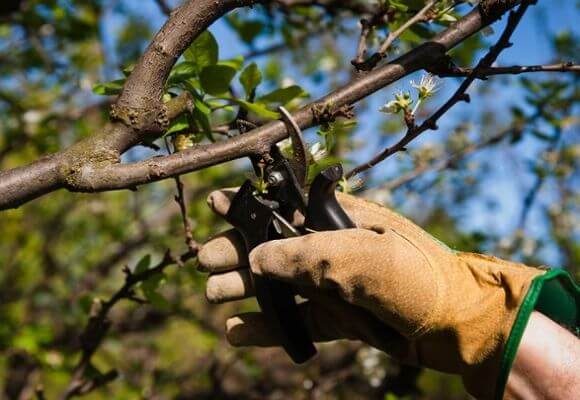
From the fifth year of growth, pears begin to carry out thinning pruning. Remove branches that grow horizontally. Young branches are also cut, which interfere with the penetration of light.
In the last days of October and in March, all damaged, dry and diseased branches are removed. Places of cuts should be treated with garden varnish.
Watering
The pear must be watered several times during the entire growing season:
- before flowering (late April or early May);
- after the end of the flowering period;
- in the future, they are guided by the weather (if the weather is hot and there is little rain, then water it 4 times);
- the last watering is carried out in the second decade of September.
Young seedlings are moistened even more often. The first two seasons after planting, the tree needs up to 15 liters of water in 7 days. In the following years, the amount of water increases to 25 liters in 2.5 weeks. After moistening the soil, it is imperative to loosen it.
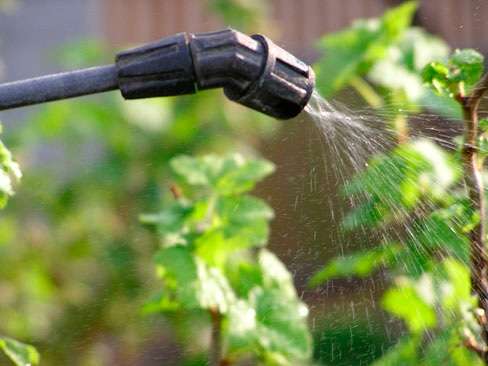
Whitewash
Whitewashing is necessary to protect the tree from winter frosts, as well as from some infections and pests. Whitewash covers the trunk and lower branches.
The composition can be made independently from lime, clay and copper sulfate.
Fertilizers
The pear is fertilized with nutrients throughout the growing season:
- It is recommended to add organic components in the fall every three years. Humus, compost, bird droppings are suitable.
- Before flowering, it is advisable to add urea, nitrate and carbamide.
- After flowering, spraying with a liquid urea solution is useful.
- In the fall, it will not be superfluous to feed the soil with mineral compounds. You can use a mixture of superphosphate and potassium chloride.
It is very important to observe the recommended proportions when diluting the composition. Not only the lack, but also the excess of trace elements can negatively affect the development of culture.
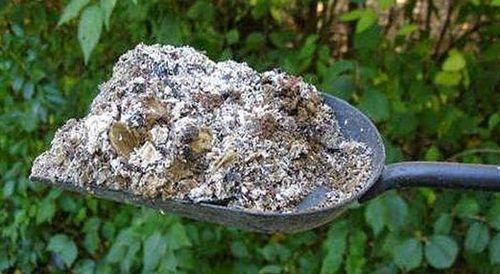
Preparing for winter
The tree does not tolerate frosts below -24 degrees, so the pear should be carefully prepared for wintering:
- In the near-trunk zone, fallen leaves, debris are removed, and weeds are removed.
- The earth is being dug up.
- The area around the trunk is mulched with peat or straw. The thickness of the mulch should be 20 cm.
- After that, the trunk is covered with spruce branches or burlap.
- After the snow falls, a snowdrift is thrown around the trunk. The snow from the branches must be shaken so that they do not break under its weight.
If these requirements are met, the fruit tree will more easily tolerate low temperatures.
Diseases and pests of pear
Among the diseases that can most often damage the plant, there is powdery mildew, black cancer, and brown spot. The fact that a pear is infected with an infection can be found out by the state of the leaves and trunk. On the leaves there is a white bloom or spots of different colors. The trunk of the tree is covered with cracks, color changes.
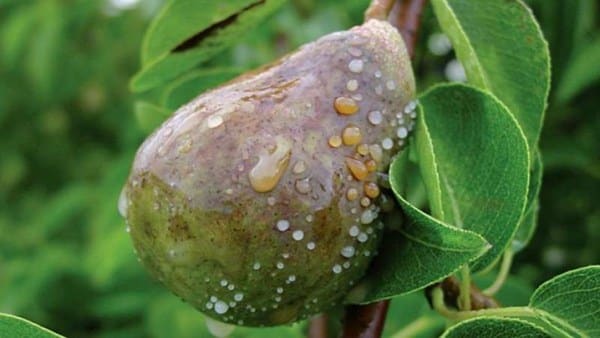
Of the pests, the Russian beauty pear is attacked in most cases by the pear and moth. The ovaries begin to fall off, the leaves curl, turn yellow. Fruits fall prematurely.
Ways to protect pears from diseases
Treatment with Bordeaux liquid, copper sulfate, "Baktofit", "Kuprosil" helps to cope with the infection and protect the tree from re-infection.
Ways to control pear insect pests
The tree can be treated with drugs such as Iskra, Fufanon. In the fall, it is imperative to dig up the near-trunk zone and remove the fallen leaves.
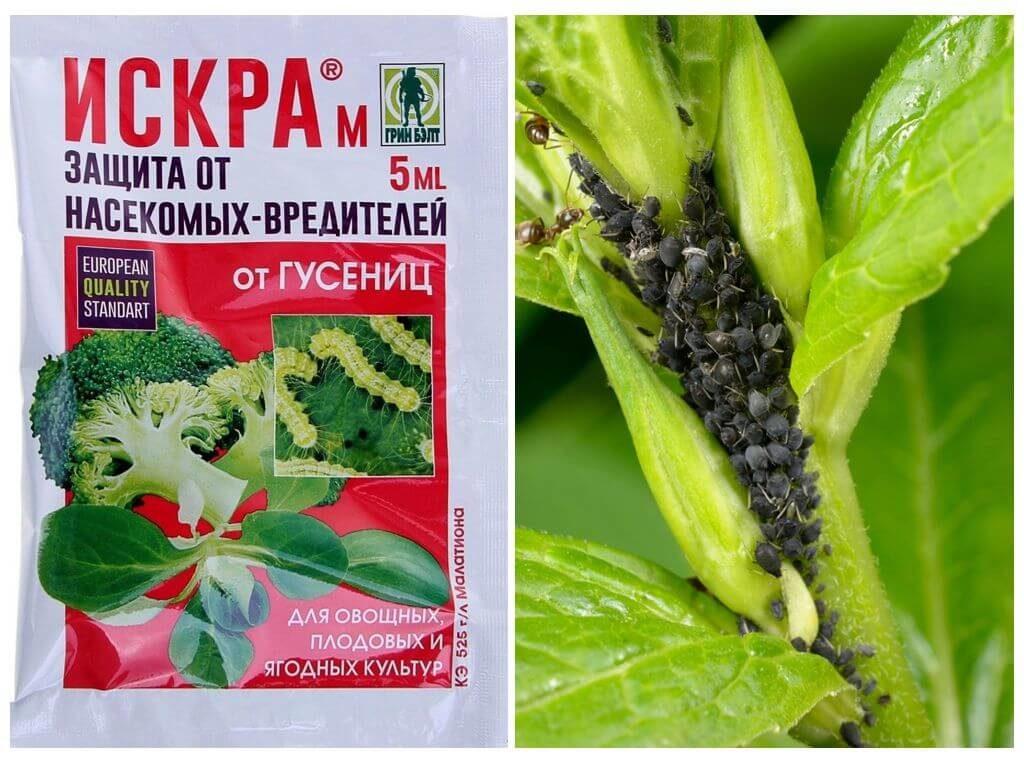
Harvesting and preservation
The harvest begins to ripen in the first half of September, but you can start harvesting in the last days of August. Harvesting is carried out in dry, clear weather. The pear is harvested unripe when the skin has just started to turn yellow. The harvested crop for ripening is harvested in a warm, well-ventilated room.
For storage, pears must be put in wooden boxes. Each row of fruit is separated by sawdust or hay.Store in a cool, dark place at temperatures from +1 to +3 degrees. In such conditions, pears will be stored up to 1.5 months.
Council. Pears intended for long-term storage do not need to remove their stalks.


